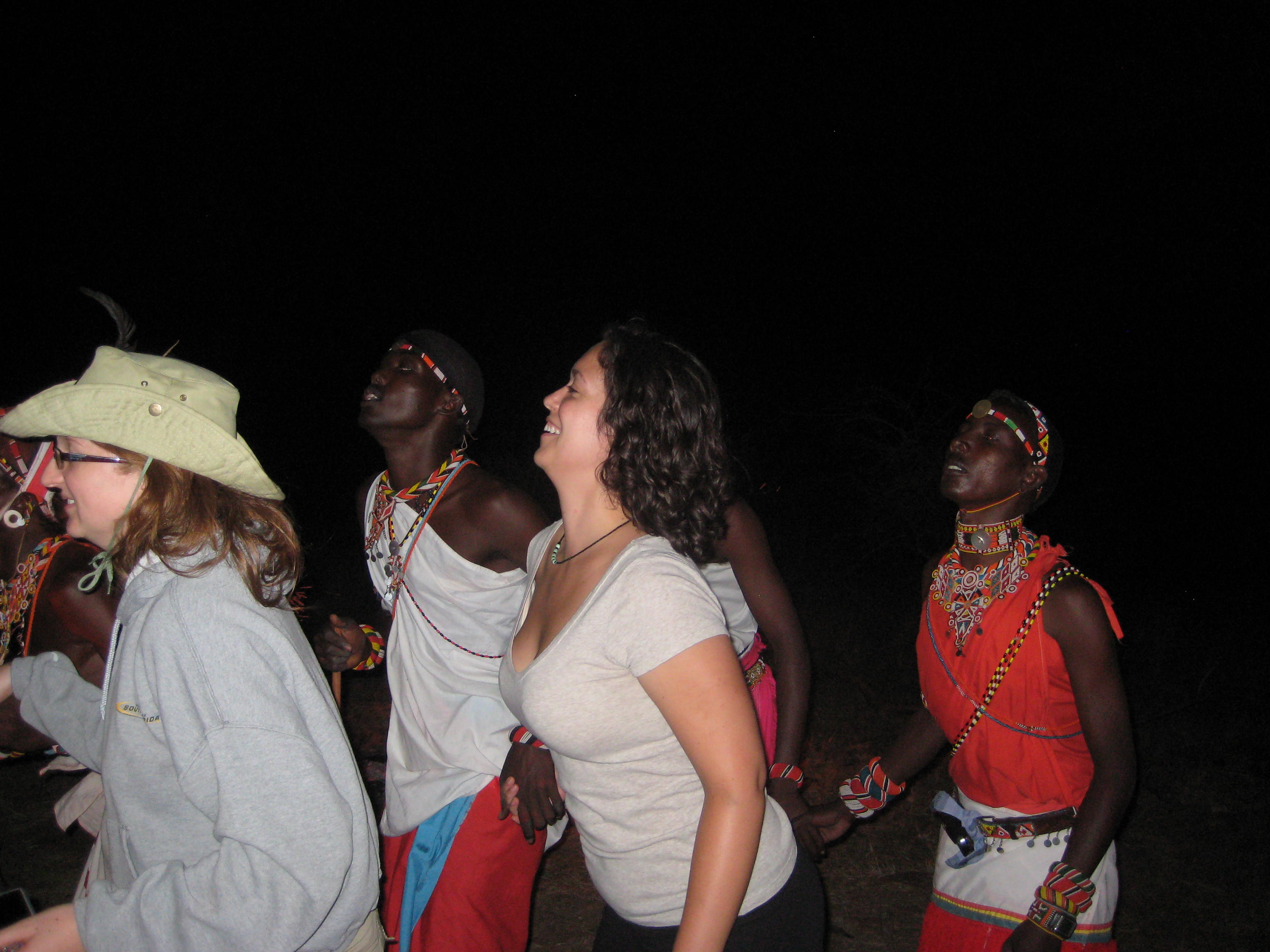
Admittedly the drive was longer than I or either of the camp staffs expected. We left Saruni around 8:30a and expected to be in our camp, Kitich, in the Mathews Mountains by lunchtime. In fact, we didn’t get there until 2 p.m.
We returned to the reserve and then traveled west past Intrepid’s and out the West Gate. This has never been an area with much game nor very attractive. And I was particularly disappointed that West Gate was in such disrepair.
Once outside the reserve it was typical rural Africa, with a number of local Samburu villages. Later we emerged onto the unpopulated basin not far from Wamba, and that was where we saw Grevy’s zebra.
This was a real bonus. We know from the March KWS survey that the Grevy’s like most northern antelope were decimated by the drought. We saw two groups for a total of a dozen animals.
The drive from the Wamba road into Kitich is really the pretty part of the safari, but the road is terrible. We went through two small villages, one of which was having its market day. There were a large number of Samburu warriors, many newly painted and dressed to the nines. It was an incredibly colorful experience.
The Mathews in many respects resembles the lower altitudes of the Aberdare. It was an incredibly stark contrast to the semi-arid scrub of Samburu, but note that in terms of driving time, the Aberdare is actually closer.
Much less is known about the biomass of the Mathews than the Aberdare, because it is so remote. We passed a car from the Northern Rangeland Trust that was beginning a survey of the ecosystem, long overdue and anxiously awaited by many. For years it’s been presumed that deBrazza’s monkey is found here, but many wonder if it really still exists.
What I immediately noticed was actually a greater diversity of birdlife than the Aberdare. Both plains birds, like the sooty boubou, and forest birds, like the tropical boubou, were calling as we entered Kitich camp. Later we’d see other examples, such as the chinspot and white-eyed batis.
We took an afternoon walk of about an hour, down an elephant path! And there was evidence there to be sure. The camp manager, an old hand, Patrick Reynolds, led the walk with his loaded rifle.
The rains have been very heavy here and the grass was very high, but that also meant the forest was in full bloom. It was truly outstanding, with tiny flowers from all colors of the rainbow. Can’t wait until our longer walk, tomorrow!